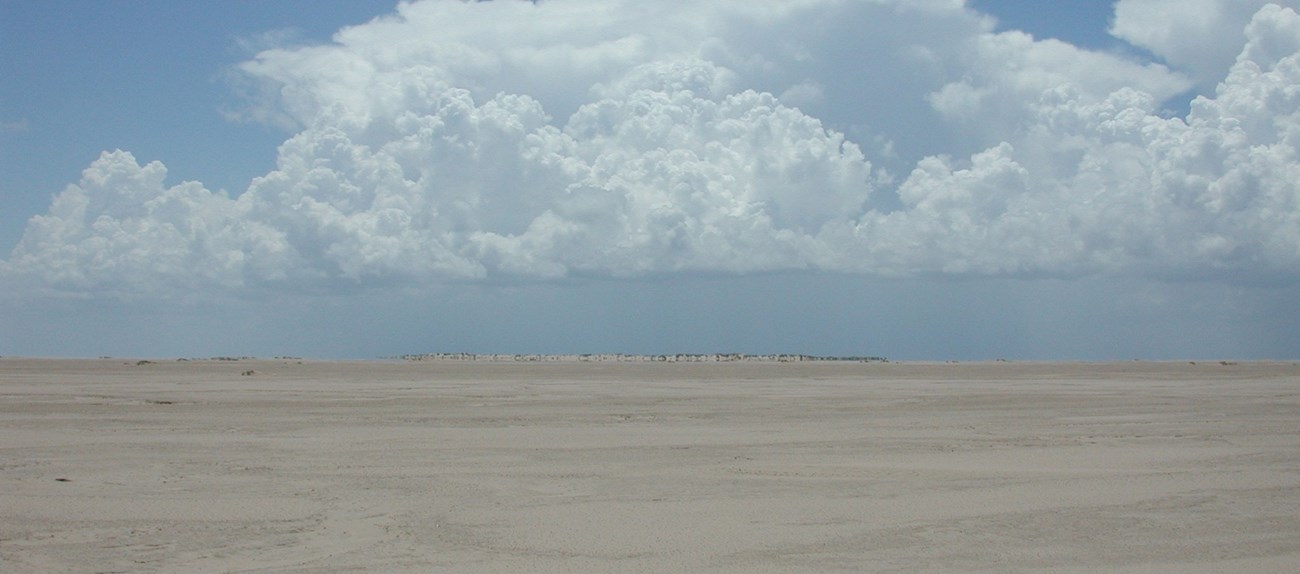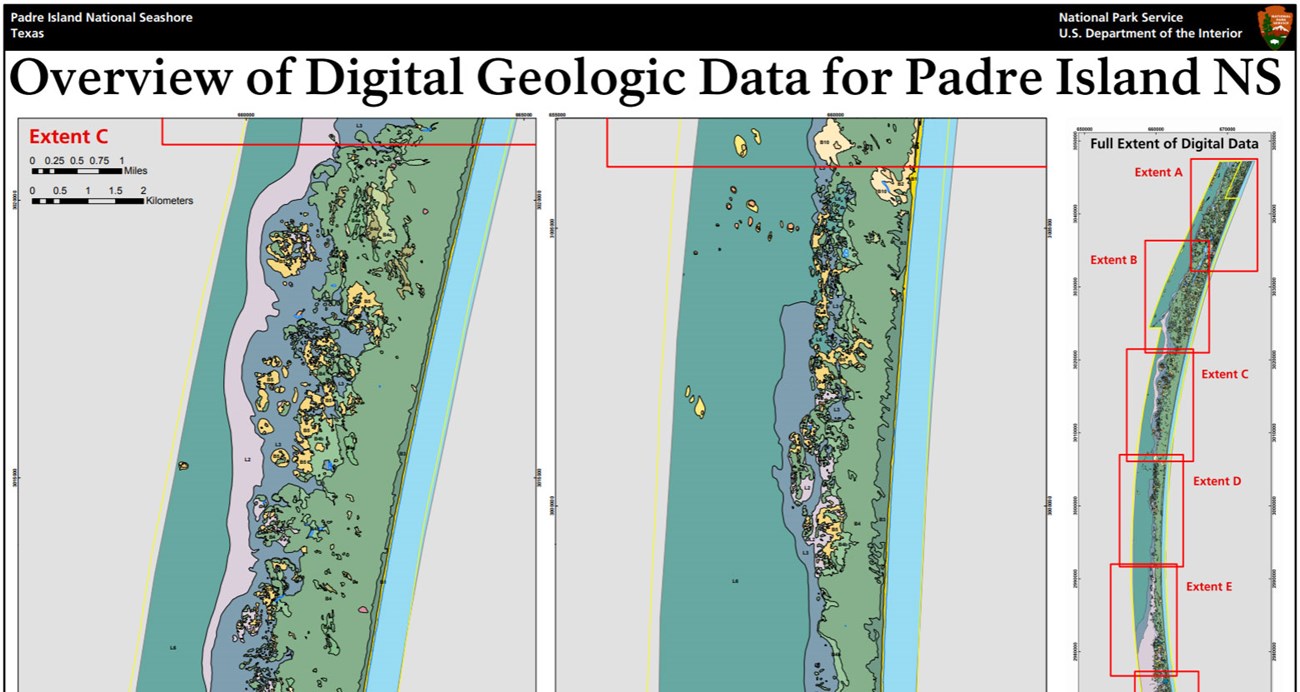Last updated: July 15, 2024
Article
NPS Geodiversity Atlas—Padre Island National Seashore, Texas
Geodiversity refers to the full variety of natural geologic (rocks, minerals, sediments, fossils, landforms, and physical processes) and soil resources and processes that occur in the park. A product of the Geologic Resources Inventory, the NPS Geodiversity Atlas delivers information in support of education, Geoconservation, and integrated management of living (biotic) and non-living (abiotic) components of the ecosystem.

Introduction
Padre Island National Seashore (PAIS) preserves and protects a 105 km (65.5 mi)-stretch of Padre Island along the Gulf Coast of eastern Texas in portions of Kenedy, Kleberg, and Willacy Counties. Established on April 6, 1968, PAIS encompasses approximately 52,784 hectares (130,434 acres) and represents one of the longest sections of undeveloped barrier island in the United States. Bounded by the Gulf of Mexico on the east and Laguna Madre on the west, PAIS contains a major segment of remaining coastal prairie in Texas that features a dynamic environment noted for its sandy beaches, unobscured views, abundant wildlife, and diverse recreational opportunities such as windsurfing, swimming, fishing, beachcombing, kayaking, and more. The barrier island landscape of PAIS features sandy shorelines, grasslands, dunes, hardwood hammocks, wetlands, ponds, mudflats, and marine environments that support numerous rare, threatened, or endangered species. The national seashore includes important nesting grounds for the critically endangered Kemp’s ridley sea turtle as well as four other protected sea turtle species. More than 380 migratory, overwintering, and resident bird species have been documented at PAIS, and the island is designated a Globally Important Bird Area by the American Bird Conservancy and is recognized as a Site of International Importance by the Western Hemisphere Shorebird Reserve Network (National Park Service 2016c).
Geologic Setting
Padre Island National Seashore is situated in the Coastal Plain physiographic province of southeast Texas, a relatively young region comprised of gently sloping Cenozoic sedimentary deposits. The barrier island landscape that defines PAIS is geologically dynamic, continuously being reshaped by erosional coastal forces that include wind, waves, tides, storms, sea-level change, and anthropogenic processes such as dredging and shoreline engineering (KellerLynn 2010). Geomorphologic units mapped within PAIS are only several thousand years old and represent Holocene barrier island and lagoon environments that display considerable variation across the island (Weise and White 1980). Barrier system units mapped along the national seashore include beach, dune, sand flat, salt marsh, brackish- to fresh marsh, dredged channel, and washover zone deposits that are largely dominated by unconsolidated sand, mud, shells, and plant debris. Lagoon system units predominantly occur along the western portion of PAIS in association with the hypersaline Laguna Madre and consist of tidal flat, grass flat, and lagoon-margin sands and muds.
Regional Geology
Padre Island National Seashore is a part of the Coastal Plain Province and shares its geologic history and some characteristic geologic formations with a region that extends well beyond park boundaries.
- Scoping summaries are records of scoping meetings where NPS staff and local geologists determined the park’s geologic mapping plan and what content should be included in the report.
- Digital geologic maps include files for viewing in GIS software, a guide to using the data, and a document with ancillary map information. Newer products also include data viewable in Google Earth and online map services.
- Reports use the maps to discuss the park’s setting and significance, notable geologic features and processes, geologic resource management issues, and geologic history.
- Posters are a static view of the GIS data in PDF format. Newer posters include aerial imagery or shaded relief and other park information. They are also included with the reports.
- Projects list basic information about the program and all products available for a park.
Source: NPS DataStore Saved Search 3138. To search for additional information, visit the NPS DataStore.
A NPS Soil Resources Inventory project has been completed for Padre Island National Seashore and can be found on the NPS Data Store.
Source: NPS DataStore Saved Search 3089. To search for additional information, visit the NPS DataStore.

Related Links
Related Articles
Padre Island National Seashore
National Park Service Geodiversity Atlas
The servicewide Geodiversity Atlas provides information on geoheritage and geodiversity resources and values within the National Park System. This information supports science-based geoconservation and interpretation in the NPS, as well as STEM education in schools, museums, and field camps. The NPS Geologic Resources Division and many parks work with National and International geoconservation communities to ensure that NPS abiotic resources are managed using the highest standards and best practices available.

